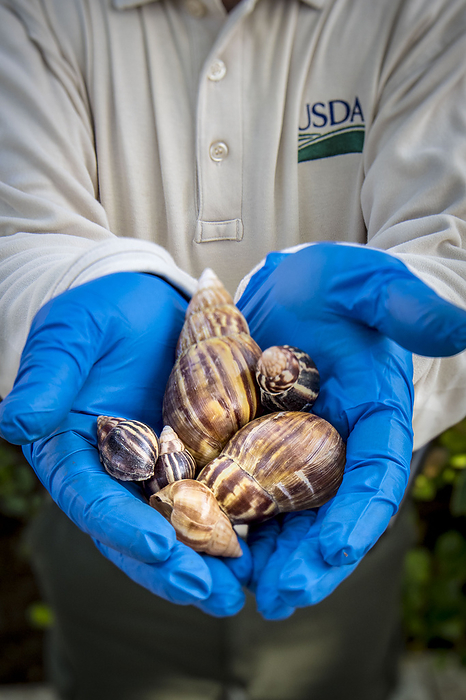
RM
Shells from invasive giant African snails, USA
Man holding the shells of giant African snails (Lissachatina fulica) in San Juan, Puerto Rico, where they are considered invasive. Giant African snails are not native to the Americas, and cause considerable damage to crops and native plants there. This is in part due to the speed at which they reproduce and their broad diet; they are known to eat over 500 species of plant. They are also vectors (carriers) of a parasitic nematode which can cause meningitis in humans., by Preston Keres/US DEPARTMENT OF AGRICULTURE/SCIENCE PHOTO LIBRARY

More
Top Categories
